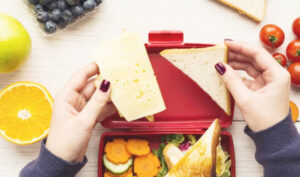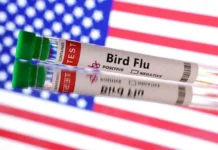Lunch is an important meal for children to provide energy and nutrients to keep them going throughout the afternoon. A packed lunch made at home can be a healthy and delicious choice and gives you control over the foods and ingredients included.
The key to a healthy packed lunch is variety and getting the right balance of foods to provide children with all of the nutrients they need to stay healthy.
When it comes to packing school lunches, it’s important to consider food safety, in addition to nutritional value and making sure your kids eat enough vegetables. Fact is, dangerous bacteria can rapidly build up in food that is not kept at a safe temperature and cause food borne illness. When you pack that lunch and send it off to your child in the morning, it can have unsafe amounts of bacteria growth by lunchtime.

How To Keep Kids’ Lunches Safe
To make sure your child’s school lunch is kept safe, be sure to take the following precautions:
Get an Insulated Lunch Box Or Bag
Using an insulated lunch box or bag and frozen gel packs can be one of the most effective ways to keep food cold—and safe—till lunchtime. Anything that should be refrigerated, such as a sandwich made with lunch meat, yogurt, and milk, should be kept cold in your child’s lunch box or bag.
Pre-chill Your Child’s Lunch
If you’re making a sandwich with meats or giving your child cooked chicken, pasta salads, or other pre-made food, try to make it the night before so that it chills adequately before you put it into your child’s lunch box. An extra benefit: Making lunch the night before is a terrific time-saver for those busy mornings.
Snacks Ideas For Your Family
Keep Warm Food Warm
It’s just as important to keep hot food at a safe temperature as it is to keep cold food at lower temperature. To keep food hot, use a Thermos or a similar insulated food container. Before placing food in the insulated Thermos, fill the container with boiling water and let it stand for a few minutes. When the container is thoroughly pre-warmed, place the hot food inside and close the top immediately.
Use Frozen Cold Packs
It is recommended that you use at least two colds packs to make sure that food stays at an adequately safe level of coldness in the lunch box. Put the most perishable foods right next to the ice pack. Some foods, such as crackers, bread, and whole vegetables and fruits (unpeeled bananas, apples, oranges, etc.), do not need to be kept cold. Put the foods that need to be kept cold right next to the ice packs so that they stay coldest.
Use a Frozen Juice Box
Another way you can keep your child’s lunch cold in their insulated lunch box is by freezing juice boxes. Pop them in the freezer the night before and voila! You have a cold pack for your child’s lunch that’ll thaw and be ready to drink by lunchtime.
Throw Away Leftovers
If your child brings home an uneaten container of yogurt, a partially-eaten sandwich, or other food they did not finish, throw it in the trash or compost bin. Any leftover food in their lunch box has been warm too long and is likely no longer safe to eat. The same goes for any warm food, which has most likely cooled to an unsafe temperature.
Pack Small Portions
Young school-age children generally eat small portions of food. To avoid questions about what is and isn’t safe when it comes to leftovers, don’t pack large amounts of food in your child’s lunch. This will also save you from having to throw away a lot of food at the end of the school day.
Don’t Re-Use Disposable Packaging
Used disposable packaging, such as sandwich bags, could harbour bacteria and could cause illness. If you want to go green with your child’s lunch box, opt for environmentally-friendly – but still safe – reusable lunch containers and packaging that can be washed and sanitized, such as reusable sandwich wrappers.
Other Food Safety Measures
Take these precautions as well to ensure your child’s lunch stays safe:
Be cautious about cross-contamination: Wash cutting boards and counter surfaces and utensils thoroughly with hot water after preparing raw meat, poultry, and fish, which can harbor dangerous bacteria such as salmonella. If possible, consider using one cutting board for vegetables and fruits and a separate one for raw meat and poultry.
Keep perishable foods refrigerated: Meat, poultry, fish, eggs and other perishable foods should be kept in the refrigerator at all times. Do not leave food at room temperature for more than two hours, or more than one hour if the temperature is above 90 degrees. Avoid thawing frozen food at room temperature; instead, thaw it overnight in the refrigerator.
Practice good handwashing habits: When preparing lunch, always make sure you wash your hands first. And teach your child to wash their hands properly before eating their lunch.




